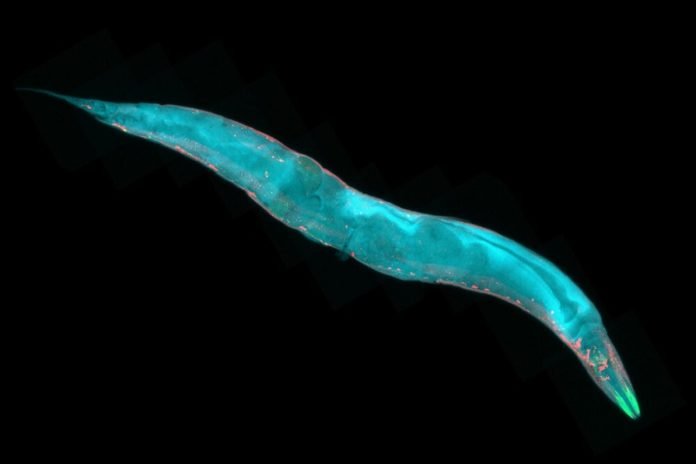
Scientists have discovered something pretty cool about tiny worms and how they find their partners.
These aren’t just any worms, though; they’re roundworms, some of which can have babies all by themselves!
This discovery is helping us understand more about how animals attract each other and could even teach us about the history of love and mating.
Roundworms, also known as nematodes, are everywhere – in the soil, in water, and some can even live inside other animals.
A particular kind of roundworm, related to the well-studied Caenorhabditis elegans, is at the center of this new study. What’s interesting about these creatures is how they mate, or in some cases, don’t.
Female roundworms have a straightforward approach to finding a mate: they can literally sniff out males! Once they find a male, they quickly mate and get pregnant in just a moment’s time.
But, for hermaphrodites (worms that are basically female but can also fertilize themselves with their own sperm), it’s a different story.
They’re not interested in mating at all until they run out of their own sperm. Only then do they start looking for males.
This quirky behavior is fascinating because it shows how flexible these tiny creatures can be with their mating habits.
For a while, they’re perfectly content to reproduce on their own. But once they can’t do that anymore, they switch gears and seek out males.
This switch is a smart move from nature’s perspective, ensuring that the worms can keep passing on their genes in the most efficient way possible.
The study, published in Current Biology, was led by scientists at the Rockefeller University.
They watched how these worms behaved in a lab and were surprised by what they found, especially the part about female worms tracking males by smell. It’s a game-changer because it challenges the idea that only males choose their mates.
Why does this matter? Well, it gives scientists clues about why animals act the way they do when it comes to love and mating. It also tells us something about evolution, or how living things change over time to better survive and reproduce.
In a nutshell, these roundworms are teaching us a lot about the complex dance of attraction and reproduction.
By understanding these tiny creatures, scientists hope to uncover more secrets about the natural world and maybe even the origins of attraction itself.



